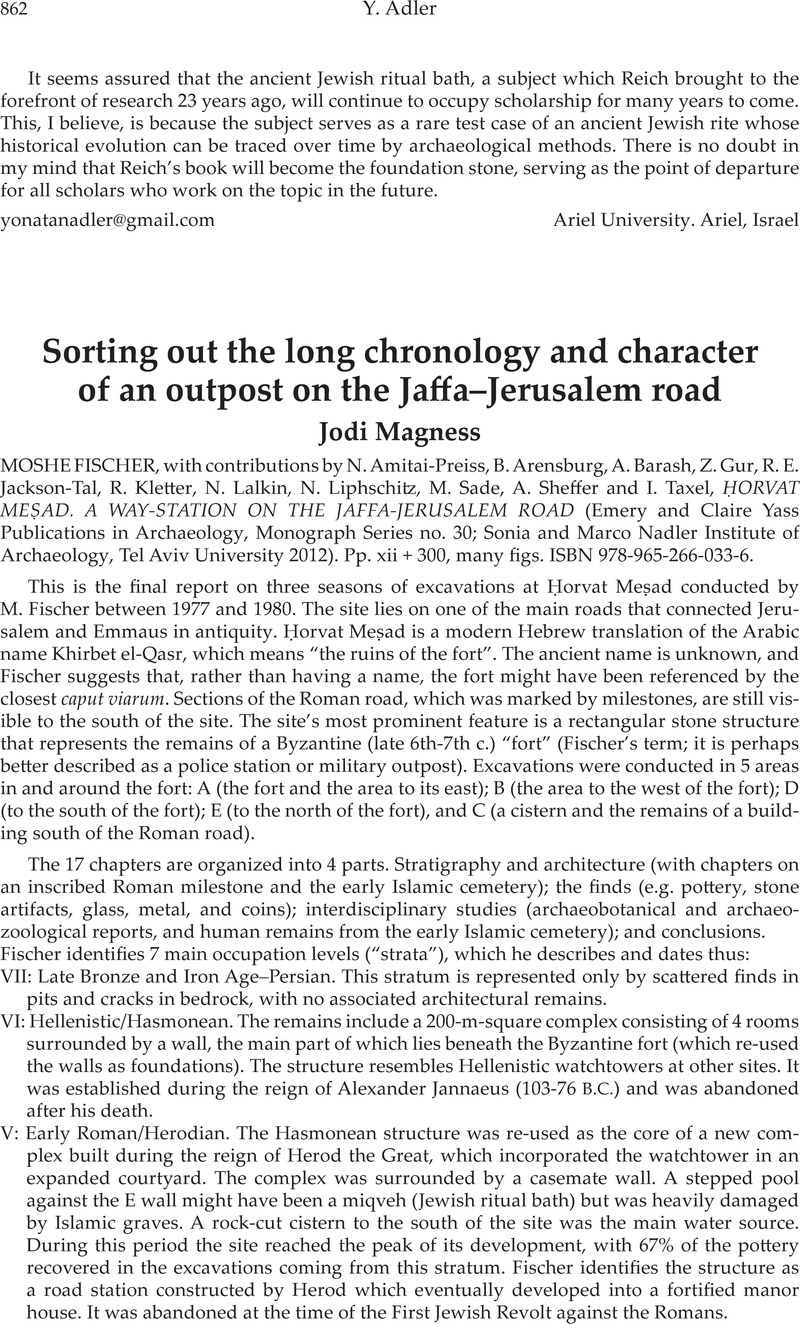No CrossRef data available.
Published online by Cambridge University Press: 27 November 2014

1 The renumbering of the loci and baskets also appears to have caused the homogenization of elevations. As elevations are not provided in the Index of Loci, this is not immediately evident, but it becomes clear through a comparison of the elevations provided for the illustrated pottery. For example, the same elevation (528.94-528.82) is given for all of the pottery illustrated from various baskets from the following loci in Square P7: 954 (Stratum VI); 953 (Stratum V); 952 (Stratum VI); and 951 (= Tomb 2) (Strata II-I). Similarly, the same elevation (529.23-528.61) is given for the pottery illustrated from various baskets from the following loci in Square Q5: 936 (Stratum V); 981 (Stratum IV); 980 (Stratum III); 979 + 990 (Stratum II) (some of the baskets from 936 and 981 have an elevation of 527.55-527.55). Conversely, in a few cases the same locus has different elevations; e.g., on p. 110, pottery from L936 (fig. 5.21:9-10) is listed as coming from two different elevations (527.55-527.55 and 529.23-528.61). The new locus numbers (and therefore the stratum designations) appear to have been made by grouping together baskets containing pottery of similar dates. For example, in Square P7, baskets 1721, 1722, 1723 and 1725 are assigned to L954 (Stratum VI); baskets 1707 and 1709 are assigned to L953 (Stratum V); baskets 1706 and 1752 are assigned to L952 (Stratum IV); and baskets 1703, 1704 and 1751 are assigned to L951 (= Tomb 2) (Strata II-I). Overall, the baskets appear to be rather neatly separated into different loci and strata, although there are a few examples of pottery of different periods coming from the same basket, such as pottery from basket 537 in L981 (Stratum IV) and L929 + L979 + L990 (Stratum II) (Square Q5).
2 Ariel, D. T., “Coins,” in Geva, H. (ed.), Jewish Quarter excavations in the Old City of Jerusalem conducted by Nahman Avigad, 1968-1982, vol. III: Area E and other studies, final report (Jerusalem 2006) 193 Google Scholar.
3 de Vaux, R., Archaeology and the Dead Sea Scrolls (London 1973) 5–6, pl. IVGoogle Scholar.
4 Humbert, J.-B. and Chambon, A., Fouilles de Khirbet Qumrân et de Aïn Feshkha I (Fribourg 1994) 15, plan IIIGoogle Scholar.
5 See Damati, E., “Hilkiah's Palace,” in Broshi, M. (ed.), Between Hermon and Sinai, Memorial to Amnon (Jerusalem 1977) 93–113 [Hebrew]Google Scholar; id., “The Palace of Hilkiya,” Qadmoniot 60.4 (1982) 117-21 [Hebrew].
6 See also p. 122, where the Byzantine fort is dated to the 5th and 6th c., and p. 241, where its construction is dated to the early 6th c.